What Are The Little White Flares On My Infarared Night Camera
You tin amend how well your security cameras run into at nighttime by keeping these tips in mind when installing and troubleshooting your surveillance organization.
Information technology's easy to make some elementary mistakes that can severely degrade your cameras ability to become a useful paradigm in low calorie-free conditions if you don't know what to lookout out for.
Keep reading to meet what to do and what to avoid in lodge to get the all-time image possible from your cameras.
ane. Add more visible lighting
This may seem too obvious to even mention, but also it'due south as well important to exit out of this listing. Adding the right lite source can be nearly like turning night into mean solar day when you can evenly illuminate the area being viewed by a security photographic camera. A good light can even allow a good camera to operate in color mode all night as if it were daytime.
I example would be a driveway or parking area with several vehicles parked there. A pocket-sized porch lite on the side of a nearby building might light the area a little bit, just the lighting would be uneven and full of shadows.
You might be able to ameliorate things by adding several more similar lights if the surface area layout allows it, but I remember the all-time solution is a powerful light designed to illuminate large outdoor areas like that. Something like a mercury vapor light up high on a building or on a pole will evenly and brightly calorie-free a large area, and the mounting height will greatly reduce the number and size of shadows around objects similar vehicles.
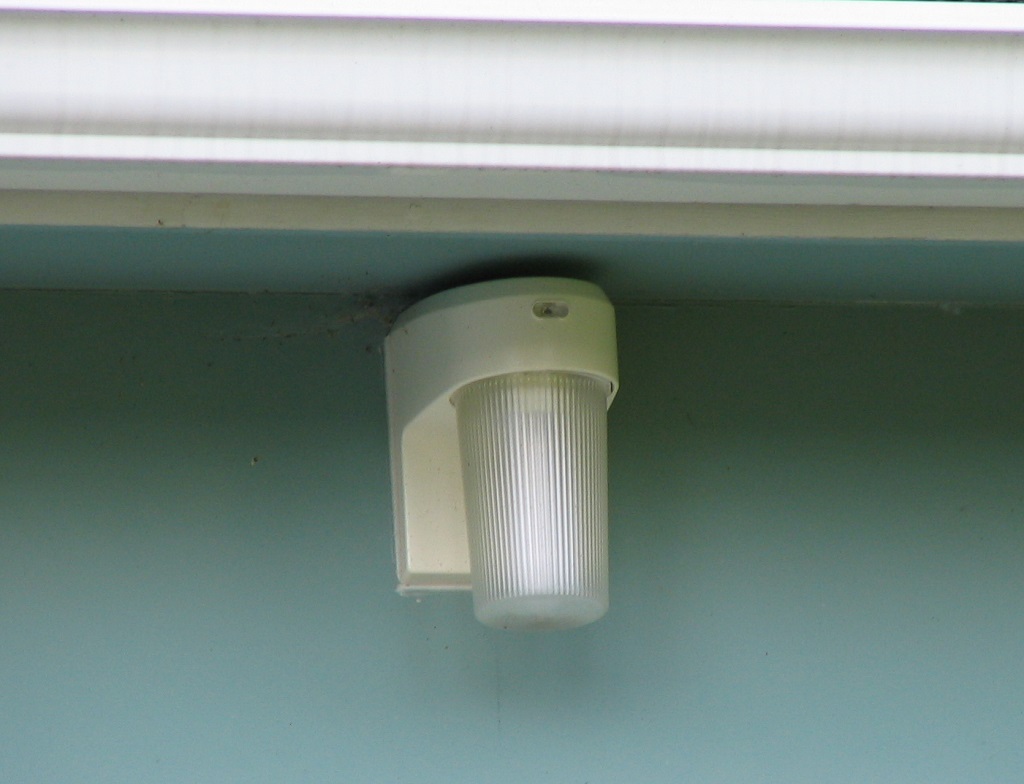
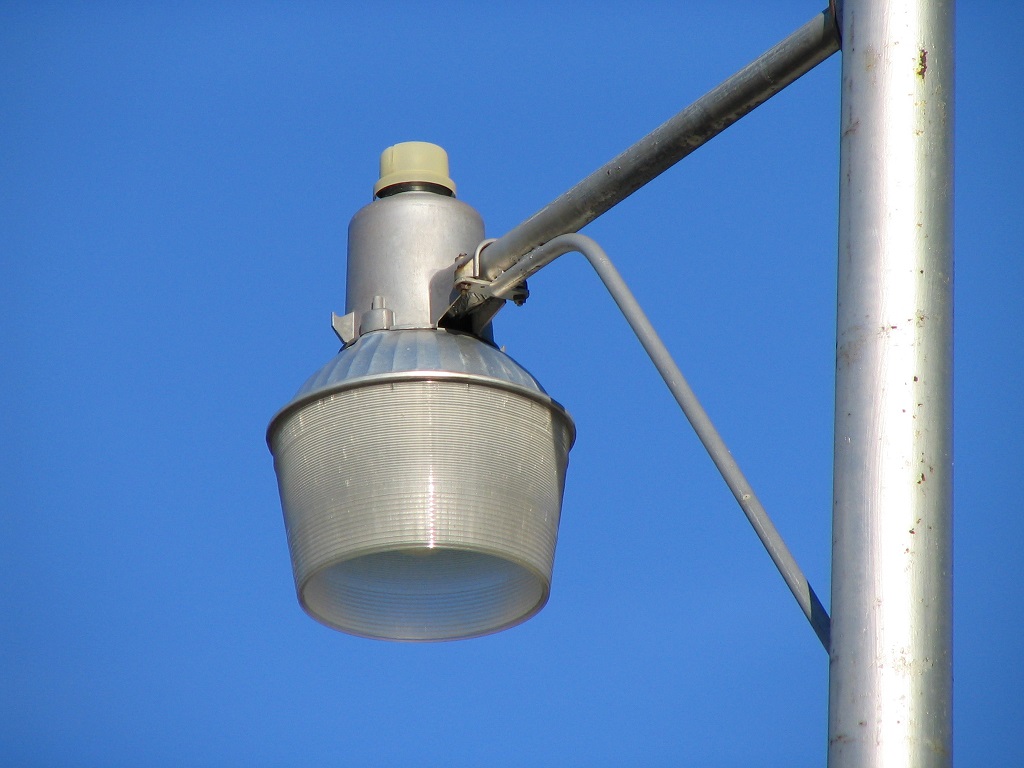
2. Install boosted infrared calorie-free sources
At that place are many places around the house where people want coverage from a security camera merely they don't want a vivid visible light turned on all night.
Many cameras come with built-in infrared LEDs that low-cal upwards the area direct in front of the camera allowing it to see in complete darkness. Unfortunately, many of these built-in lights don't provide even coverage and most aren't potent enough to illuminate anything at a reasonable distance. Of form some cameras including many high end ones don't include IR lighting at all, but there's a reason for that. Keep reading to run into why.
Adding i or more external infrared illuminators is an platonic way to lite up an area without using bright visible lights , and if done correctly tin can give y'all an awesome camera epitome in what appears to be consummate darkness to the human eye.
Depending on the particular models that y'all choose to use, the price can range from very cheap for smaller consumer models to relatively expensive for larger commercial models. Wide angle or narrow beam, weaker for short range or stronger for long range, at that place are many different configurations bachelor to conform pretty much any awarding that you tin can recollect of.
I am using several dissimilar models of external IR illuminators. For a smaller model with a narrower beam, see my review of the Univivi U06R. For a larger wide angle model, see my review of the CMVision CM-IRP12-850.
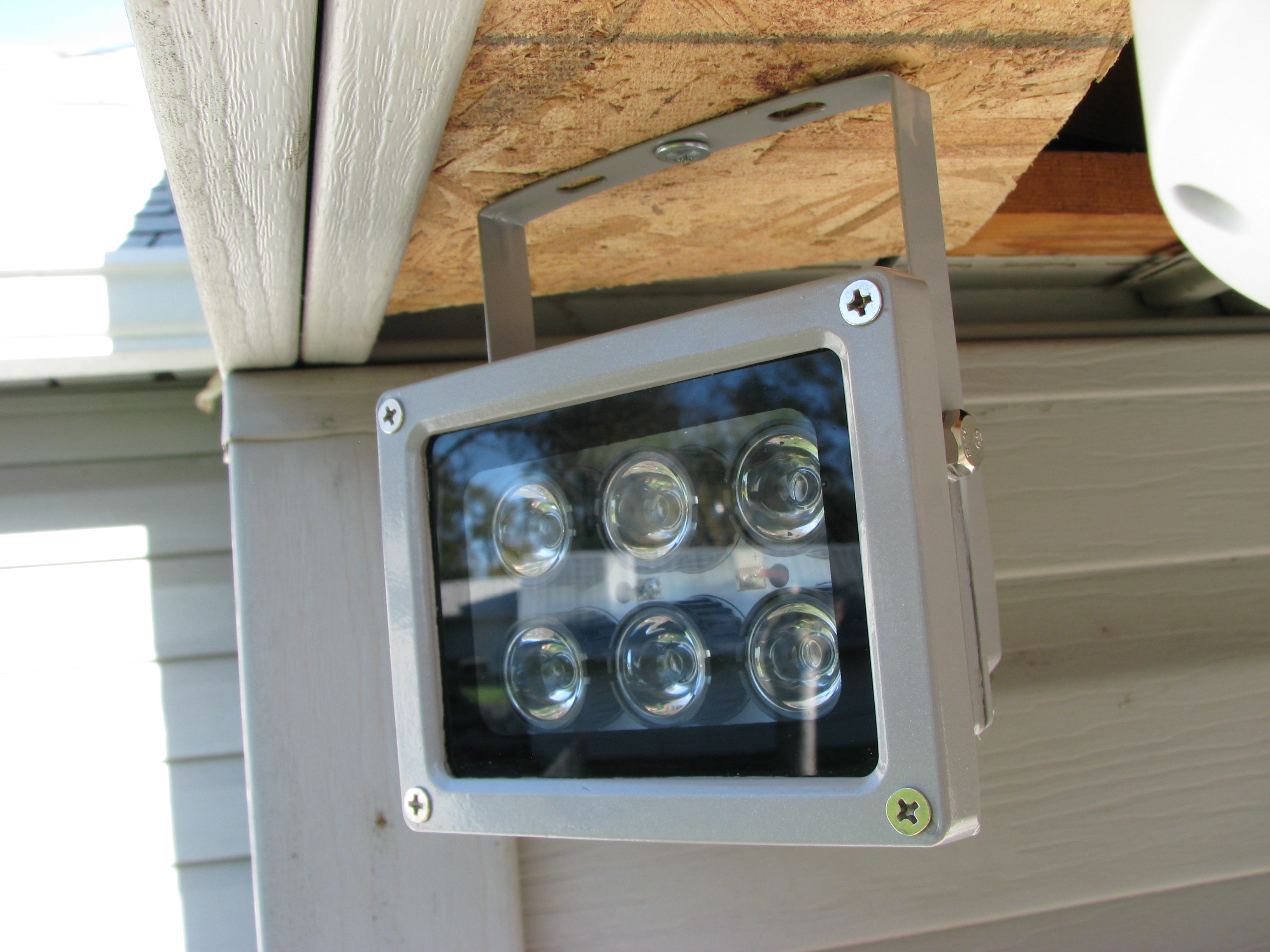

three. Keep vivid lights out of the camera's view
Be enlightened of all of the light fixtures around the location where you will be installing a camera. Practice not place the forepart of the camera most a bright lite, and never permit a bright low-cal to be directly in the photographic camera'southward field of view.
A nearby brilliant light can cause problems even if it doesn't appear in the image viewed by the photographic camera. It could crusade the day / night light sensor to not part correctly, and brilliant light striking the class over the photographic camera lens can many times get enough light to the image sensor to make it see poorly. Whether it's light directly from the bulb or first reflected off of a nearby surface, it all has the same outcome on the camera.
If you must place a photographic camera most a bright lite you should endeavor to go on the lite to the side and rear of the camera then the light doesn't directly striking the front at all if possible.
The worst case happens when yous desire to view an image in low low-cal, and you also have a bright light in straight view of the camera lens. The image sensor may be able to handle a bright prototype and a dim image, only it tin can't do both extremes at once. If you brand it view a vivid light it volition no longer be able to come across very well in the darker areas of the rest of the image.
Preventing extra light like this from skewing the dynamic range of the image sensor is 1 of the most of import things to proceed in mind, and it'due south an easy matter to accidentally get incorrect if you're not conscientious.
Hither are some farthermost examples of what a vivid light tin can exercise when allowed to be in view of a security camera. You'll even see some people on the Internet recommending this every bit a method to temporarily disable security cameras. Here I am shining a SureFire G3 Nitrolon Flashlight towards these cameras, not even direct into the camera lens, but it is a very brilliant low-cal.
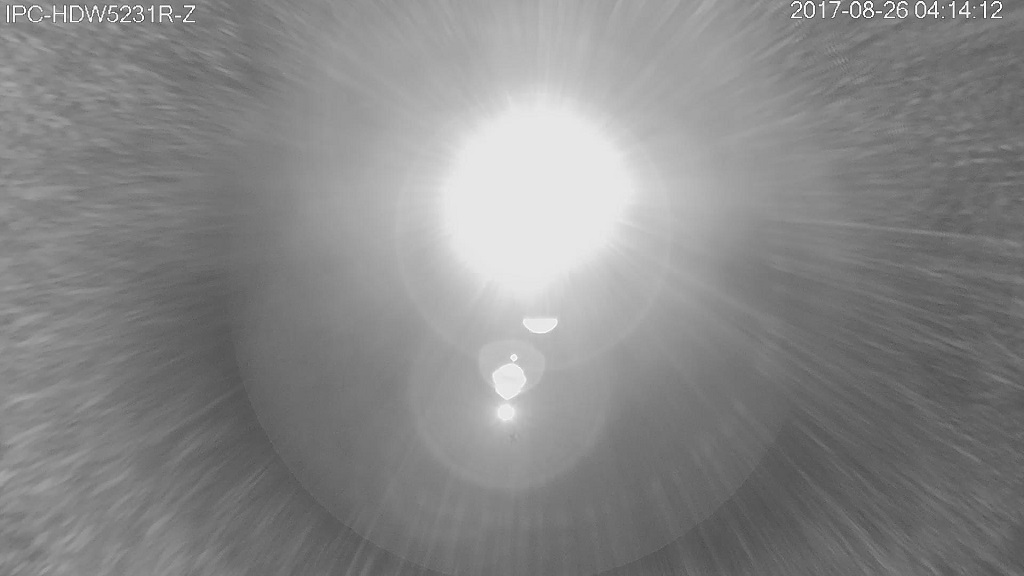
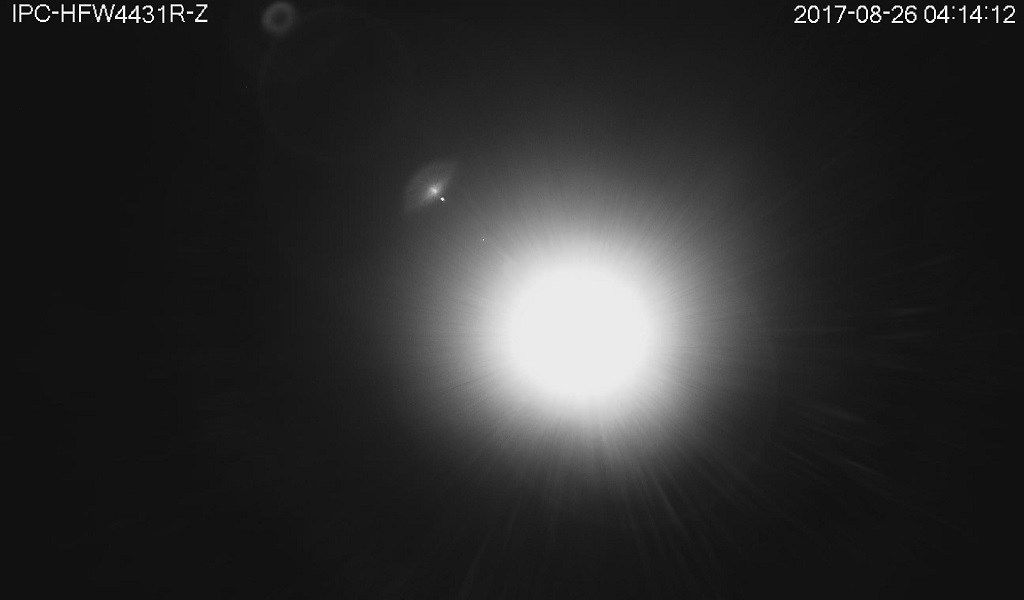
4. Reduce or eliminated nearby reflected IR
Yous might exist able to estimate what I'yard going to say here if you understood the importance of the last section. Y'all tin can besides sabotage the ability of your camera to come across in low light weather if you lot let extra unwanted infrared light to fall on the front of the photographic camera. This is easier to do than yous might think and information technology can affect the nighttime image of many cameras without the possessor even realizing that it is happening.
Suppose yous mountain a camera on a building and get it pointed where yous desire, and you find that the daytime epitome is great but the night fourth dimension prototype seems bright enough but you tin can't actually make anything out in the darker areas.
Ane common cause is the infrared lite from the photographic camera's built-in IR LEDs reflecting off of a nearby surface like the wall or soffit around where the camera is mounted. But like with the visible calorie-free in the department above, that surface reflecting the IR light back at the camera doesn't even have to be in view of the lens and image sensor to cause problems.
Also, just like with visible low-cal, the worst case is when the nearby building surface or some other object is reflecting IR calorie-free back at the photographic camera and is in view of the lens and image sensor. And so y'all are pretty much guaranteed to blind the camera with reflected infrared light.
It doesn't thing if the lite is visible, from the built-in IR, or from an external IR illuminator. Direct or reflected, in view or only nearby, any extra undesired light similar this will degrade your camera's power to meet at nighttime.
These ii pictures were taken while I work on my review of the CMVision IR-130 illuminator. The built-in IR for both of these cameras is disabled, but sticking my hand in front end of the CMVision illuminator I am able to create enough IR light reflection towards the cameras to pretty much ruin the dark epitome on them.
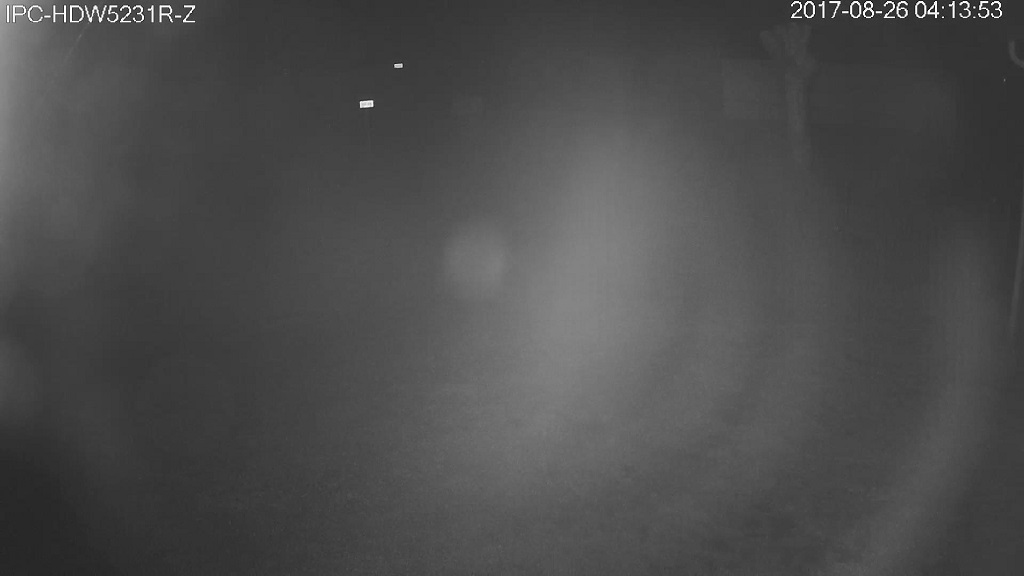
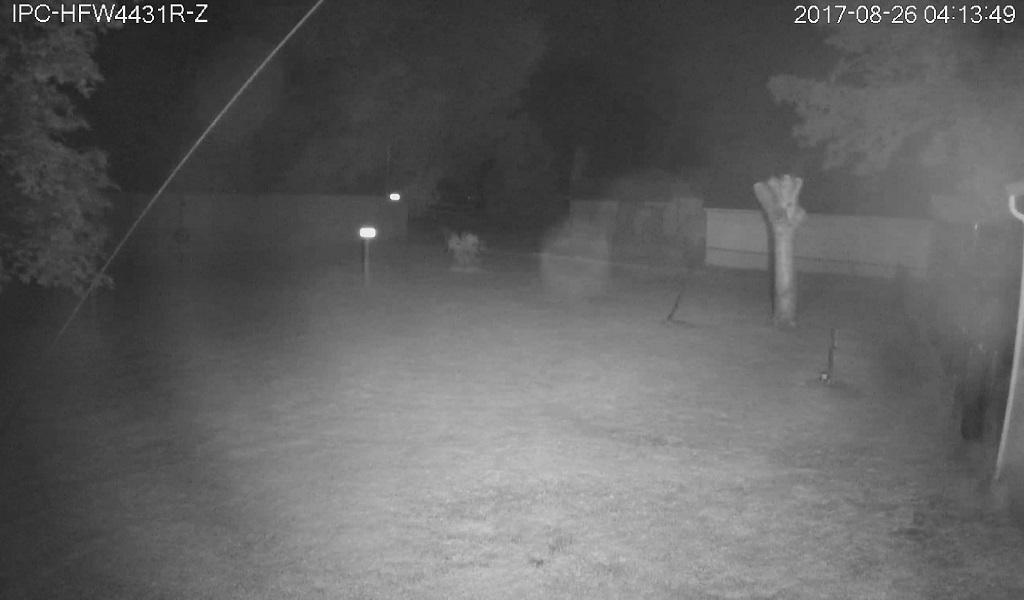
5. Turn off your camera's built-in IR
Say what, Steve? That'south crazy talk! I know it's not intuitive, but hear me out. Suppose y'all've got the photographic camera with built-in IR properly mounted, no nearby lights affecting it, and no nearby objects reflecting the IR from the photographic camera back at information technology.
Unfortunately, some camera designs just aren't all that great. Available in several different housing styles, the camera design with the lens in the center and a number of small infrared LEDs in a ring around the lens has been around since the old analog CCTV days. It's very inexpensive to manufacture and it gives consumers what they desire, a depression priced photographic camera with built-in IR dark vision.
Even though manufacturers try to go along those LEDs separated from the lens, sometimes the IR light can reach the lens area and nosotros saw in the section in a higher place what that causes. Yep, we can't see every bit well in depression lite every bit nosotros should be able to. There is a reason that about higher stop professional security cameras do not have congenital-in IR like this, information technology degrades their performance.
Most cameras with built-in IR lights take a setting that will y'all you to turn them off for testing or permanently if y'all desire, only not all cameras let them to exist turned off. My review of the Reolink RLC-411WS shows that information technology'due south one of the cameras that does non permit you to turn them off.
vi. Utilize the proper camera housing
This sort of expands on the concluding section, and the absolute worst camera housing to utilize with built-in infrared lighting is the dome photographic camera. Some manufacturers make great dome cameras with built-in IR but some practise not, and no matter the manufacturer you have the greatest take a chance of bug with visible and IR light reflection and other dark vision problems with dome cameras than with whatever other housing style.
That leaves us primarily with bullet and turret camera housings and either i can be great and much better than a dome. Lower end models will use the band of smaller LEDs around the lens that are less desirable than the newer models with larger LEDs that are mounted further away and more isolated from the lens. These newer LED designs also provide much more powerful and uniform infrared light output.
My review of the Vivotek FD8134V shows an farthermost example of terrible built-in IR problems on a dome camera. Perhaps the worst camera that I've ever owned.
Here are links to my reviews of the Hikvision DS-2CD2342WD-I Outdoor Turret Camera, the Dahua IPC-HFW4431R-Z Outdoor Bullet Camera, and the Dahua IPC-HDW5231R-Z, which all accept more advanced IR LED designs.
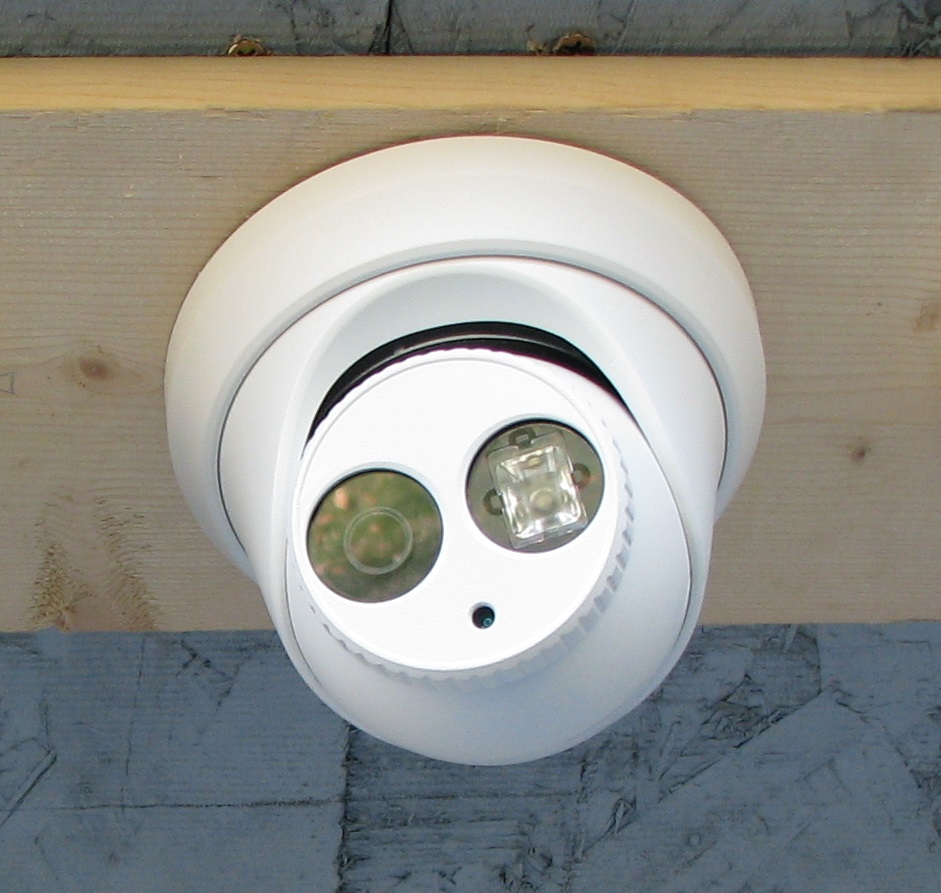
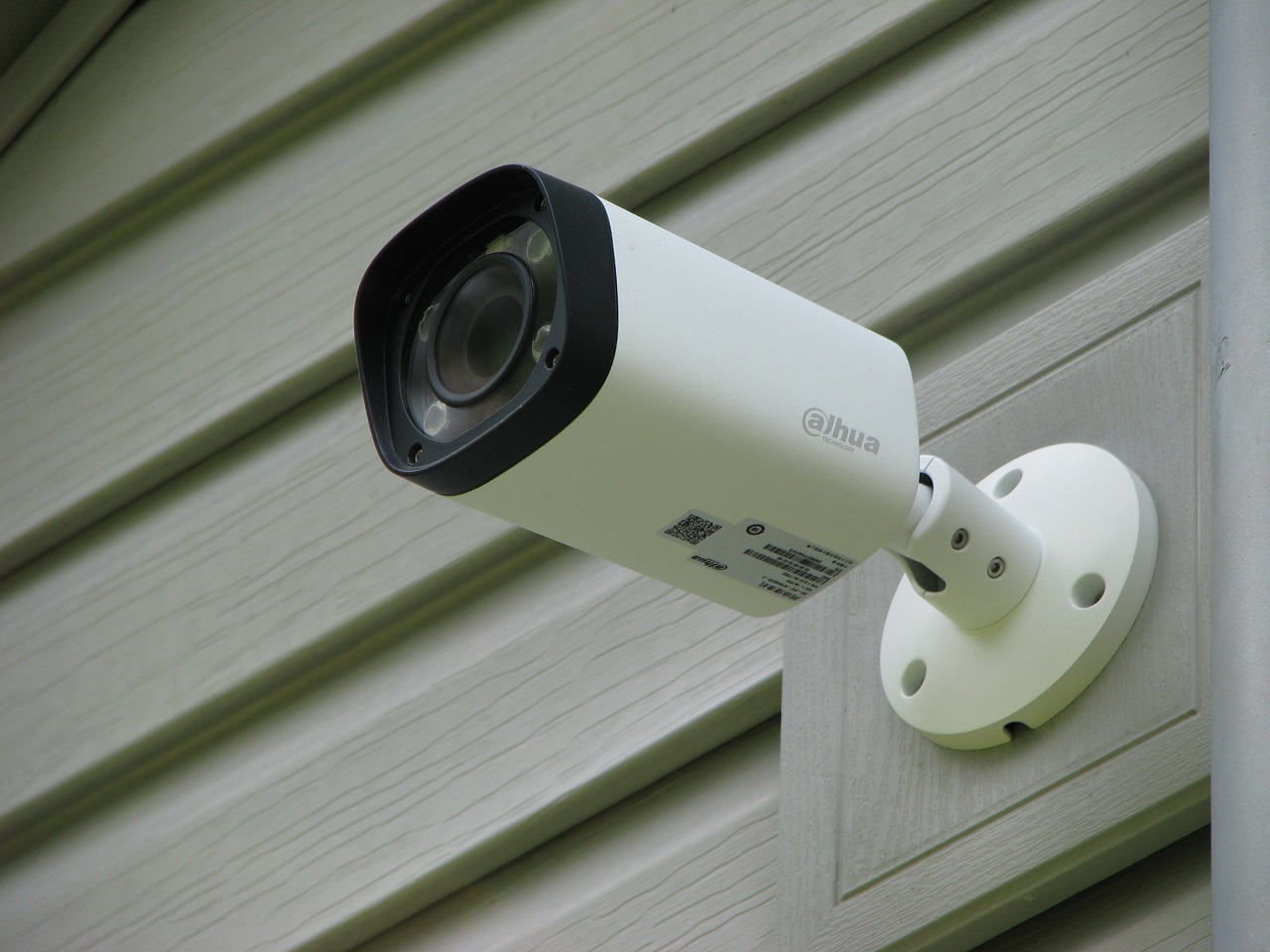
7. Get a meliorate depression light camera if you need it
Sometimes you only need a better photographic camera if you want to exist able to come across in the dark. This is particularly true if y'all're using a camera in an expanse with no lighting, insufficient lighting, and where additional IR lighting is not realistic. An off-grid solar powered cabin would exist a skillful instance of a location like this.
There are cameras that take been specifically designed to perform well in low light weather condition. They typically have larger, more advanced, more sensitive, and higher quality image sensors. They are besides non high resolution because a lower resolution allows for larger pixels on a given sensor size, and larger pixels can gather more light.
Here's my post showing some of the best depression light night vision security cameras that I am enlightened of on the marketplace right now at a reasonable cost.
I own a couple of the models listed and they really do work better in low calorie-free than your average cameras exercise.
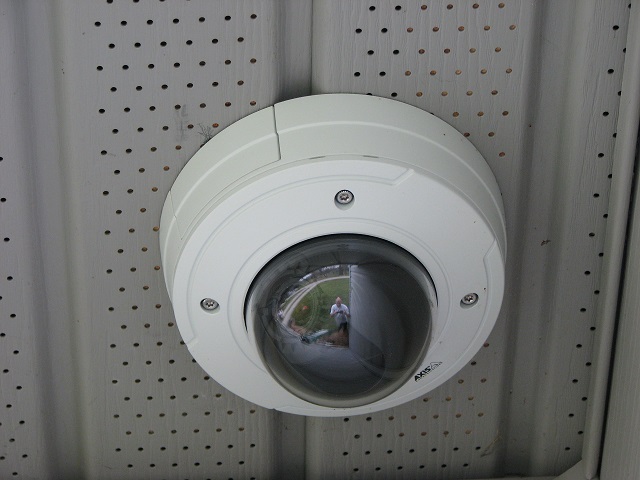
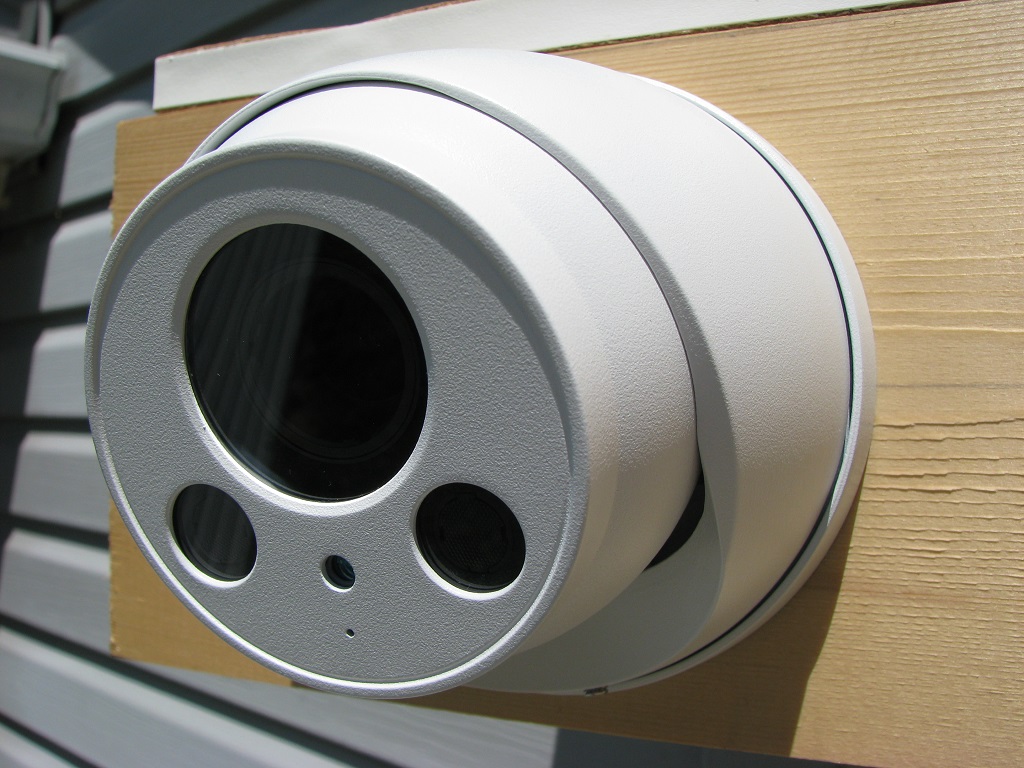
viii. Apply a camera with a mechanical IR-cut filter
Truthful solar day / night cameras will actually have a separate mean solar day mode and nighttime mode. During the day an infrared filter is physically placed in front of the lens. This IR-cut filter blocks infrared light from reaching the image sensor, which allows the sensor to accurately reproduce colors. Since the image sensor can detect infrared too as visible light, the colors in an epitome would be drastically altered if the filter was not in place.
This IR-cut filter is physically moved away from the image sensor when the camera switches to night mode, and the camera also switches to blackness and white style instead of color.
You can be sure that a camera without an IR-cut filter is not going to perform well during the twenty-four hour period or at night, and so always double check just to be certain what you're getting.
nine. Continue the front of cameras and illuminators make clean
Yous'll want to keep the glass in forepart of your camera lens clean for the best possible view both 24-hour interval and nighttime. Clay and debris can be actress troublesome on some cameras at night though, especially those using built-in infrared lights.
Bugs and spiders seem to dear cameras and infrared lights for some reason. I find that I need to clean the face up of my cameras at to the lowest degree two or three times each year, usually Bound, mid-Summertime, and Fall. Besides normal dust aggregating from being exterior, the cleaning is primarily needed to get rig of the spider webs and junk that bugs leave on there.
The biggest issues are with fine spider webs of silk strands from that you can't even meet during the solar day, simply go brightly lit upwardly past the internal IR lights when they switch on at night.
10. Don't effort to meet through window glass
I shouldn't be surprised by how many people try to practice this, because I actually tried this when I got my first photographic camera with congenital-in infrared light about 10 years ago.
You place your new photographic camera inside so it's looking outside through a window, and it actually gives you a pretty good moving picture during the day.
Night time comes though and you lot suddenly have a useless prototype when the photographic camera switches to night fashion. Yep, all you lot can see is the reflection of those built-in IR LEDs reflecting back from the glass and nothing else. I hateful nothing else as well, this is an farthermost case of how infrared light reflecting back into the camera can make information technology useless.
Final thoughts
You might accept noticed that there are only a couple of basic principles behind all ten of these tips to help you become the most out of your security cameras at night.
Add together visible or infrared light to the surface area that you want to view at night. Even cheap cameras that don't normally work well in low low-cal conditions tin exist made to work great if yous properly low-cal upwards the area that they are viewing.
Keep undesired visible and infrared light from overpowering the paradigm sensor so it can be equally sensitive as possible and see the best that it can in low lite. Your eyes work in a like way equally the camera'southward paradigm sensor. Both can encounter well with lower levels of light, just non if someone is shining a flashlight at them at the aforementioned time!
Cull a bullet or turret camera over a dome. Choose more advanced IR LED designs over the older ring of minor LEDs around the lens if possible. Employ external IR illuminators instead of built-in IR for best operation in complete darkness.
Buy a camera specifically designed for low lite performance if needed, and keep all camera faces clean for all-time performance.
Please leave a comment beneath, and feel free to allow me know if I missed something or if you accept some other ideas on this topic.
Source: https://networkcameratech.com/10-ways-to-improve-security-camera-night-vision/
Posted by: richardsniumor1935.blogspot.com

0 Response to "What Are The Little White Flares On My Infarared Night Camera"
Post a Comment